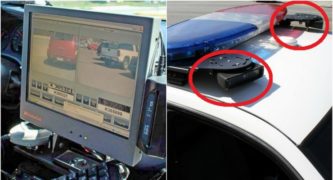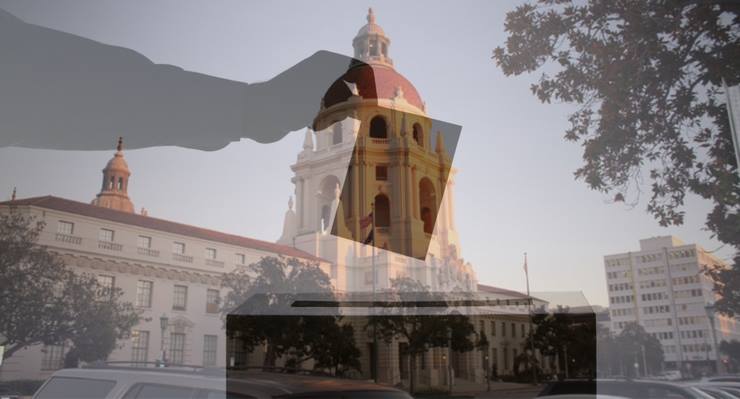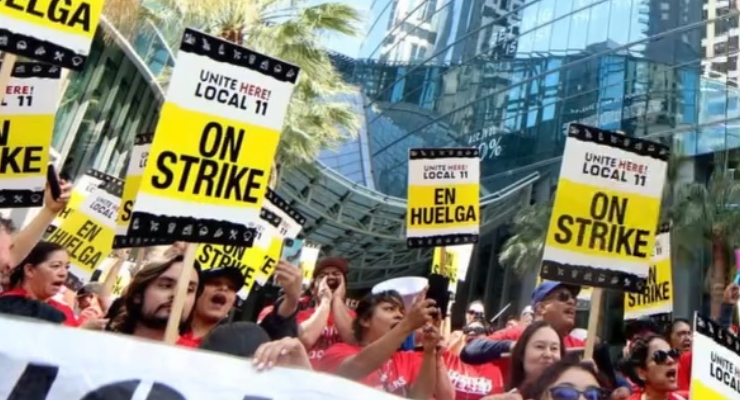
By a pair of 4-0 votes, the City Council’s Public Safety Committee on Wednesday recommended that the city spend as much as $80,000 on three new mobile Automated License Plate Readers for the Pasadena Police Department, and another $160,210 for temporary mock-up panels as part of the Colorado Street Bridge Suicide Mitigation Project.
The recommendations are expected to be on the full council’s agenda this coming Monday for a final sign-off.
The Automated License Plate Readers, or ALPRs, would be purchased from Vigilant Solutions Inc., a Livermore-based company.
According to a report from the Police Department, “Mobile ALPR systems consist of three to four cameras affixed to a patrol vehicle, software to manage the data that is collected and network connectivity to upload the information to secured cloud storage technology. The system checks each license plate against the stolen vehicle database and then stores a photo with date, time and location data for retrieval during criminal investigations.”
The PPD has been using Vigilant systems since 2017 after the department started transitioning from another ALPR contractor whose systems became outdated. Five of the former contractor’s ALPRs have been replaced since then, and the department is looking to replace 11 remaining devices within the next three to four years.
The new purchase would be “really just to refresh our existing fleet of automatic license plate readers,” said City Manager Steve Mermell.
Several residents, in public comments read aloud during Wednesday’s Safety Committee meeting, expressed worries about ALPRs being misused to violate people’s civil rights through “abusive tracking” and “discriminatory targeting.” Several commenters also worried that data could be transmitted to ICE officials to trace undocumented immigrants.
But PPD Commander Jason Clawson told the Safety Committee that the ALPRs capture “(license) numbers only, not biometric data,” and that the data is not shared with ICE. Further, Clawson said, the information gathered is retrieved only in connection with open crime cases or, sometimes, missing persons. He said the data is stored for two years and then discarded.
“Robust policies and procedures are in place to prevent the system and the information it gathers from being used inappropriately or differently from its intended purpose,” Clawson said during a PowerPoint presentation. “Policies hold personnel accountable for any misuse or abuse of the system.”
Clawson also said the technology is a great aid in police investigations, resulting in 605 “hits” for stolen vehicles or other crimes since the start of 2019. Committee members agreed the technology is a valuable police tool.
“I’m not insensitive to the concerns that people have, but I don’t think that this is the place to sort of tie one arm behind our back as it were in terms of preserving and promoting public safety in Pasadena by not doing a program like this,’’ said Council Member Steve Madison.
“I definitely think we need to avail ourselves of this.”
Added Council Member John J. Kennedy, who chairs the Public Safety Committee, “It’s for a legitimate purpose.’’
Meanwhile, the committee also recommended spending $160,210 to contract with Custom Design Iron Works Inc. of Chatsworth for the fabrication and installation of temporary mock-up panels for the Colorado Street Bridge Suicide Mitigation Project.
The full-scale mock-ups would be installed to provide better visualization of three barrier design options under consideration, before a final concept is chosen for the historic bridge.
The Public Works Department said it anticipates work on the fabrication could begin this month, and the mock-ups could be installed by November.
The temporary mock-ups would remain in place for two to three weeks to allow time for the public to observe them and provide input on which option to consider for the final design.
Kris Markarian, an engineer in the city’s Public Works Department, said the DPW will conduct “extensive outreach” to gauge public reaction to the three designs – two of which offer curved barriers of different looks, the other providing straight pickets.
Once the public checks in, a final design will be selected and permanent, iron barriers would be erected. The costs of the fancier curved barriers would be either $4.4 million or $4.6 million, while the straight pickets would cost $2.5 million, according to a DPW report.
Markarian said the bridge is not expected to be closed during the run of the mock-ups, but that some lane closures would be needed during the installation.
— Andy Vitalicio contributed to this report














 0 comments
0 comments


